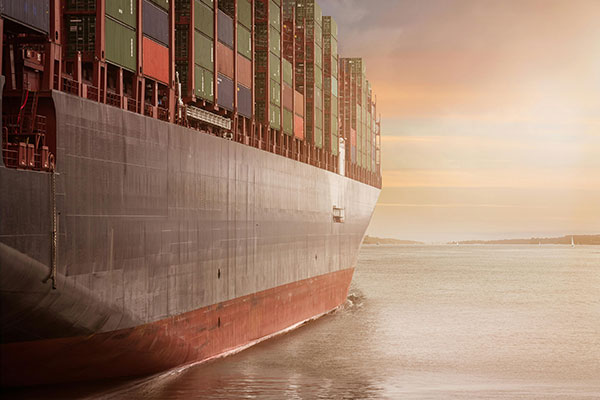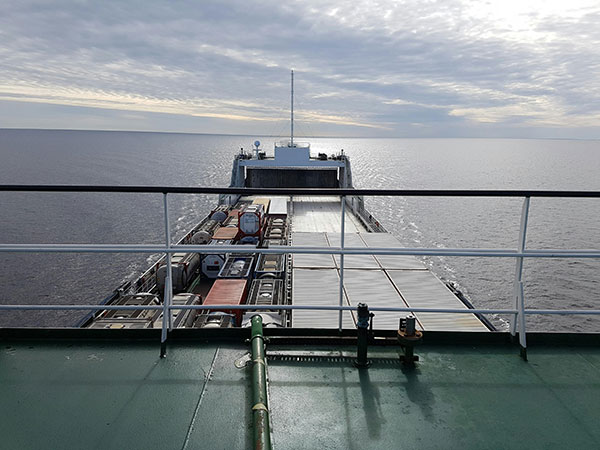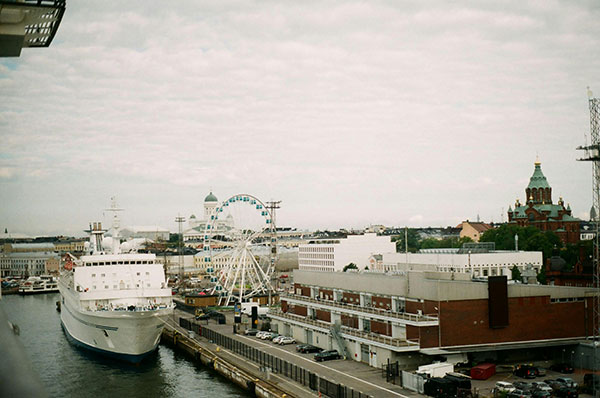Yards
Emission trading will increase freight costs in maritime traffic

From 2024 onwards, European Union’s Emission Trading System is being further expanded. It will now be applied – in several phases – even to emissions from ships and other maritime vessels. As has been the case on a number of previous occasions, EU’s new environmental regulations come with a price tag.
Climate actions in the maritime sector
are continuously being pushed forward,
both through the European Union’s
Emissions Trading System (ETS) and by way
of switching to cleaner marine fuels. Such
means are deemed necessary if climate
goals are to be achieved, even though
there is a risk of hefty new costs for maritime
traffic and freight transports.
In accordance with the EU’s ETS directive,
maritime traffic will be incorporated
into the Emissions Trading System gradually,
in various phases. This process was
started on 1st January, 2024.
ETS REQUIREMENTS ALREADY
INCORPORATED INTO NATIONAL
LAWS
In Finland, the ETS directive’s obligations
have been introduced in the country’s new national Emissions Trading Act, approved
in December 2023. It will repeal both the
current Emissions Trading Act and the Act
on Aviation Emissions Trading.
After the expansion of the Emissions
Trading System’s coverage, the ETS will
include emissions from large ships departing
from and arriving to EU ports, regardless
of the ships’ flags.
Maritime emissions trading will be
applied to vessels having a gross tonnage
of at least 5,000 and carrying freight and
passengers for commercial purposes. Similar
obligations will come to apply to offshore
vessels – such as oil and gas exploration
vessels or maritime construction
vessels – with a gross tonnage of at least
5,000 starting on 1st January, 2027.
The Emissions Trading System is the
considered to be the most significant EU-level action so far for achieving emission
reduction goals.
NEW SHIP FUELS NEEDED
This year, emissions trading will apply to
the carbon dioxide emissions of maritime
transport, starting on 1 January 2024.
Later on, the coverage will be expanded
to methane and nitrous oxide (NOx) emissions,
starting on 1st January of 2026.
In practice, shipping companies shall
acquire emission allowances to 40 percent
of verified emissions reported for 2024 and
70 percent of verified emissions reported
for 2025. Starting from 2026, emission
allowances are to be acquired in full.
In addition to emissions trading, the
maritime traffic operated within the EU
area will be required to utilise renewable
and low-emission fuels. From the year 2025 onwards, the greenhouse-gas intensity
of maritime fuels shall be reduced by
2 percent in comparison with the figures
from year 2020. Further restrictions will be
imposed at five-year intervals, with the aim
of achieving a reduction of 75 percent by
the year 2050.
It has been estimated that the maritime
sector represents approximately
3 to 4 percent of the total of the European
Union’s carbon dioxide (CO2) emissions.

EXEMPTIONS FOR
REMOTE REGIONS
Geographically, the Emissions Trade Directive
includes 100 percent of emissions
from intra-EU voyages and 50 percent of
emissions from extra-EU voyages.
To prevent transshipment activities
and calls to ports outside the EU for the purpose of evading compliance, the scope
of the Directive explicitly excludes certain
stops at non-EU ports where the risk of
evasion is deemed to be highest. The European
Commission has compiled a list of
these ports and will keep updating it.
The exclusion zone extends 300 nautical
miles from a port under the jurisdiction
of an EU Member State. This exclusion
applies only to container ships in non-EU ports where transshipment of containers
has been at least 65 percent of all container
traffic during the preceding 12
months.

Islands having fewer than 200,000
inhabitants and lacking road or rail connections
to the mainland are exempt from
acquiring emission allowances until the
year 2030. Further exemptions have been
allowed to the nine outermost EU regions, i.e. regions that are most geographically
distant from the European continent.
HUGE INCREASES EXPECTED
IN MARITIME FREIGHT COSTS
In the Baltic Sea area, the new regulations
will mean significant increases in
traffic costs.
According to preliminary estimates,
the cost effects may be in the order of
500 to 700 million euros annually by the
year 2026. These figures take into account
both the emission trading and the effects
of switching to new maritime fuels.
Expanding the coverage of ETS regulations
is part of the EU’s larger ”Fit for 55” regulation package, intended for achieving
a 55 percent reduction in environmental
emissions by the year 2030. Most of those
requirements are already being incorporated
into the national legislation of all EU
member states, including Finland.
The CEO of the Finnish Freight Forwarding
and Logistics Association, Mr.
Petri Laitinen, noted in his social media
posts in November 2023 that ETS-related
cost increases may come as a surprise to
many Finnish companies operating in the
field of foreign exports and imports. However:
”Emission trading is an important
and efficient tool for reducing environmental
emissions in maritime traffic, even
though it will mean cost increases during
the transitional stage,” Mr. Laitinen concluded
in his LinkedIn post.
by: ARI MONONEN
photos: PEXELS
LITERARY AND ONLINE SOURCES:
Carraro, Camilla – Osipova, Liudmila: The
Maritime Sector in the European Union
Emissions Trading System.International
Council on Clean Transportation (ICCT),
Dec. 2023.
Carraro, Camilla – Osipova, Liudmila:
Shipping Emissions under the European
Union Emissions Trading System.International
Council on Clean Transportation
(ICCT), Dec. 2023.
EU:n päästökauppa laajenee meriliikenteeseen
vuonna 2024.EK online news,
Helsinki 2023 (www.ek.fi).
Petri Laitinen’s Post on LinkedIn, Nov.
2023.
Traficom:Marine Transport Will
Become Part of the Emissions Trading System.Helsinki 2024 (www.traficom.fi).



